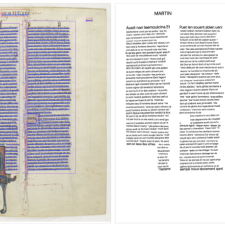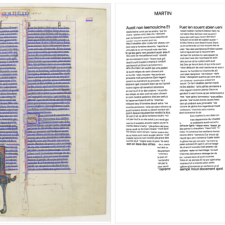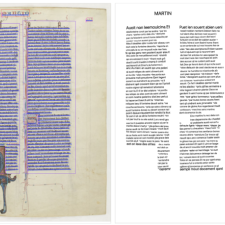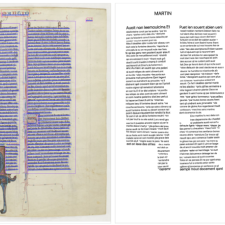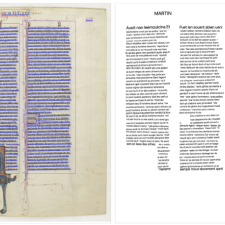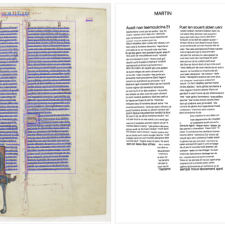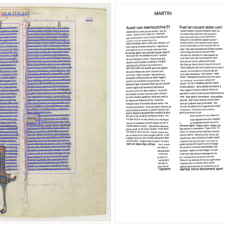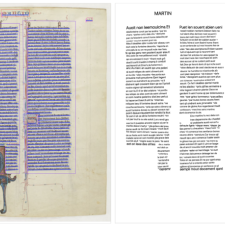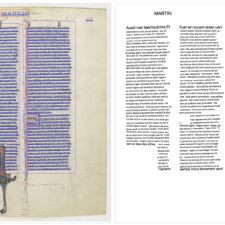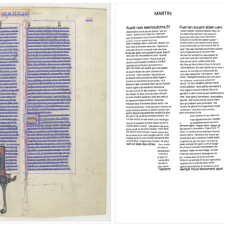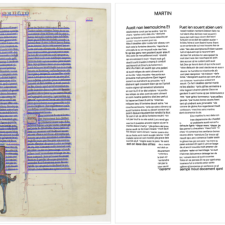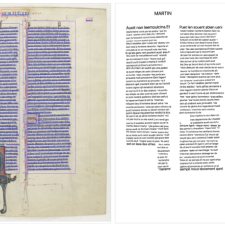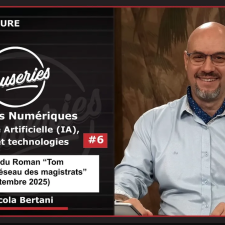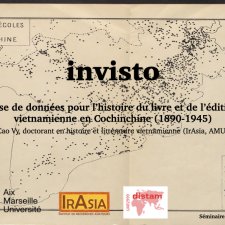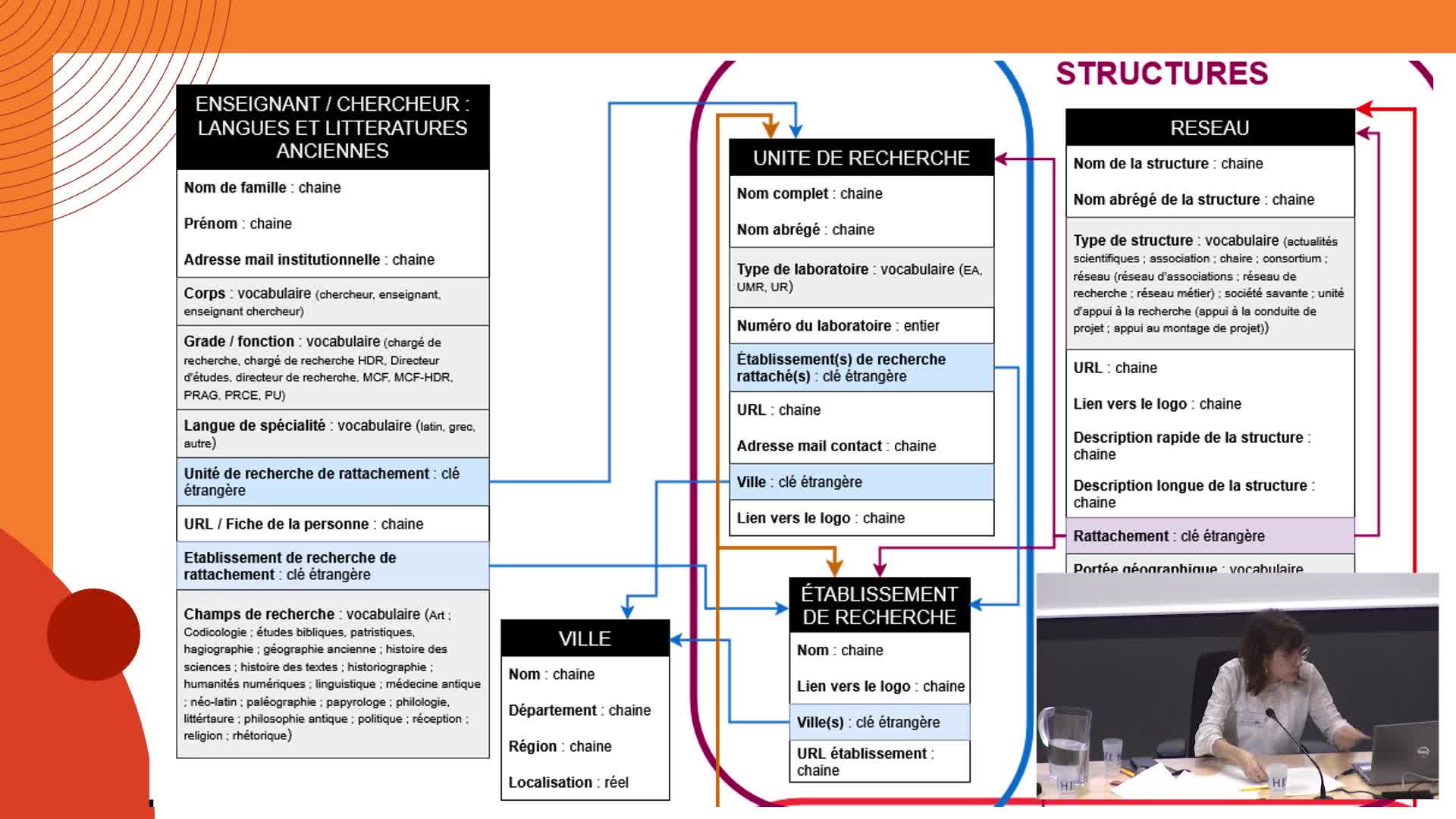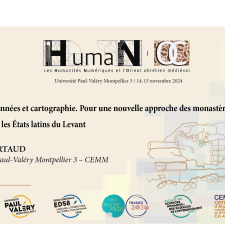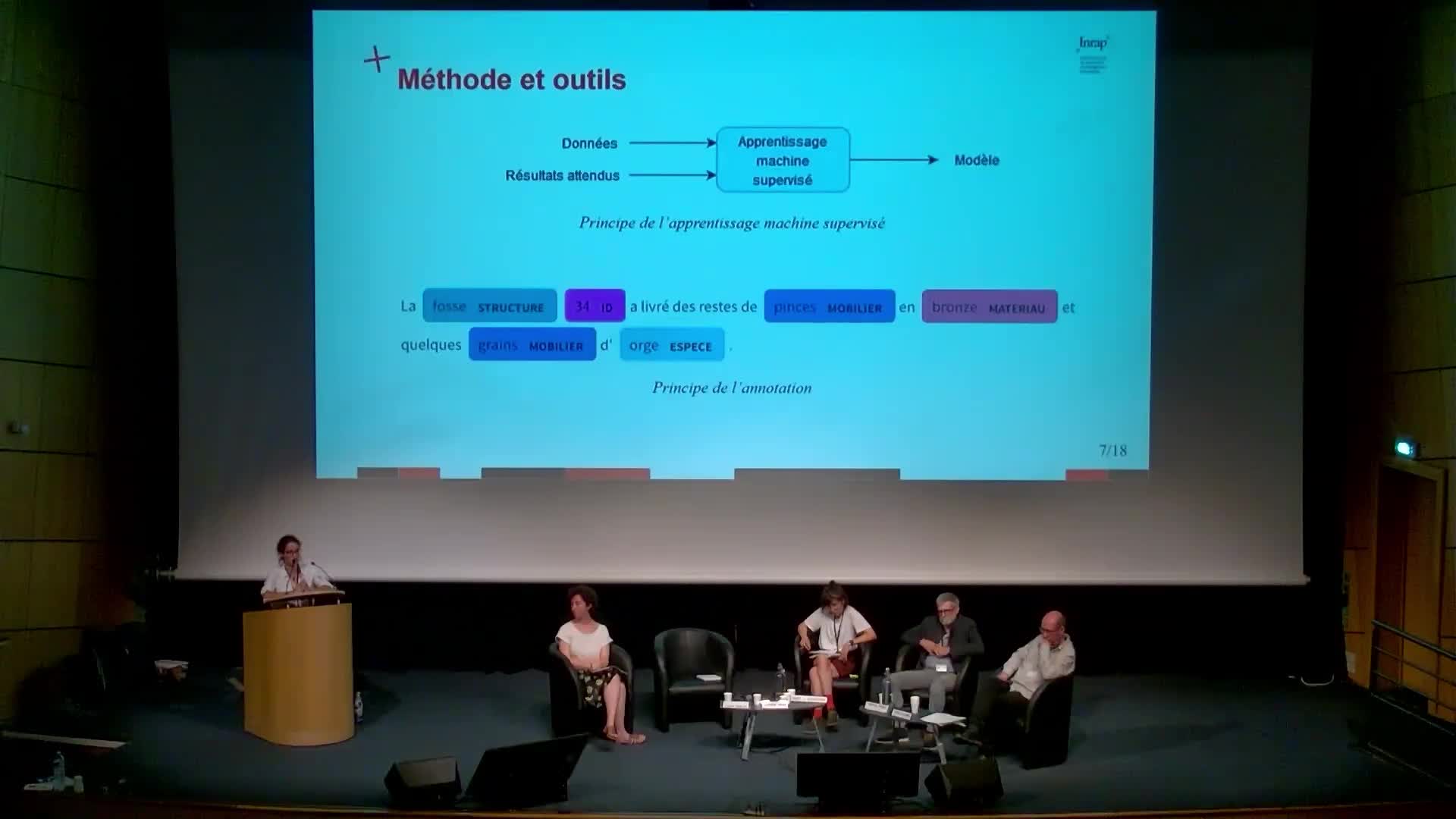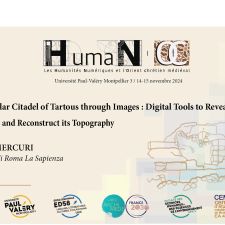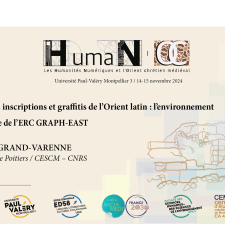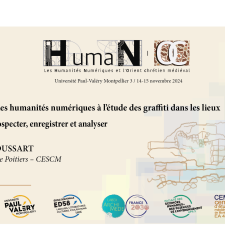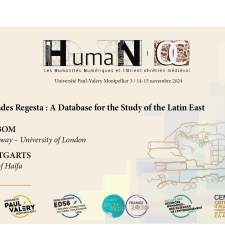Notice
2.6 : EpiSearch. Recognising Ancient Inscriptions in Epigraphic Manuscripts
- document 1 document 2 document 3
- niveau 1 niveau 2 niveau 3
Descriptif
par Federico Boschetti (University of Venice) et Tatiana Tommasi (University of Venice)
The project focuses on epigraphic codices as a proof of concept for putting digital tools at the test, thus defining new ways for the integration of large epigraphic collections. As a sample, we use the epigraphic manuscript composed by the learned ecclesiastical antiquarian Giovanni Antonio Astori (Venice, 1672-1743) and preserved in the Marciana National Library in Venice: Marc. lat. XIV, 200 (4336). In the first part of our talk, we analyse the life of the author and the characteristics of his manuscript. In the second part, we focus on the following tasks: a) evaluating the accuracy of eScriptorium on epigraphic manuscripts with training sets of different size, in order to estimate the best trade-off between the human effort to prepare the training sets and the human effort to correct the results; b) mapping legacy manual transcriptions on the manuscript facsimile; c) improving the layout analysis for epigraphic manuscripts.
Intervention / Responsable scientifique
Thème
Dans la même collection
-
2.10 : Clôture Colloque "Documents anciens et reconnaissance automatique des écritures manuscrites"
PincheAriane2.10 : Clôture Colloque "Documents anciens et reconnaissance automatique des écritures manuscrites"
-
2.8 : Reconnaissance et extraction d’informations dans des tableaux manuscrits historiques
PincheAriane2.8 : Reconnaissance et extraction d’informations dans des tableaux manuscrits historiques
-
2.7 : HTR of Handwritten Paleographic Greek Text as a Function of Chronology
PincheAriane2.7 : HTR of Handwritten Paleographic Greek Text as a Function of Chronology
-
2.4 : Expérimentations pour l’analyse automatique de sources chinoises anciennes
Vidal-GorèneChahan2.4 : Expérimentations pour l’analyse automatique de sources chinoises anciennes
-
2.3 : Analyse, Reconnaissance et Indexation des manuscrits CHAM
SchweyerAnne-ValérieBurieJean-Christophe2.3 : Analyse, Reconnaissance et Indexation des manuscrits CHAM
-
2.1 : FoNDUE - A Lightweight HTR Infrastructure for Geneva
GabaySimon2.1 : FoNDUE - A Lightweight HTR Infrastructure for Geneva
-
1.3 : HTR fine tuning for medieval manuscripts models: strategies and evaluation
Torres AguilarSergioJolivetVincent1.3 : HTR fine tuning for medieval manuscripts models: strategies and evaluation
-
2.5 : Sharing HTR datasets with standardized metadata: the HTR United initiative
ChaguéAlixClériceThibault2.5 : Sharing HTR datasets with standardized metadata: the HTR United initiative
-
1.10 : Segmentation Mode for Archival Documents with Highly Complex Layout
StoeklDaniel1.10 : Segmentation Mode for Archival Documents with Highly Complex Layout
-
2.9 : Retour d’expériences sur l’utilisation comparée de plusieurs de dispositifs de transcription …
TufféryChristophe2.9 : Retour d’expériences sur l’utilisation comparée de plusieurs de dispositifs de transcription numérique d’archives de fouilles archéologiques
-
2.2 : From HTR to Critical Edition: A Semi-Automatic Pipeline
StoeklDaniel2.2 : From HTR to Critical Edition: A Semi-Automatic Pipeline
-
1.7 : De Transkribus à eScriptorium : retour(s) d’expérience sur l’usage d’outils d’HTR appliqués à…
LeblancElina1.7: De Transkribus à eScriptorium : retour(s) d’expérience sur l’usage d’outils d’HTR appliqués à un corpus d’imprimés espagnols du XIXe siècle
Sur le même thème
-
Causeries Culture - Humanités Numériques, Intelligence Artificielle, littérature et technologies #6
PorlierChristopheBertaniNicolaCauseries Culture - Humanités Numériques, Intelligence Artificielle, littérature et technologies #6
-
Faire une histoire des territoires en contexte montagneux : l’organisation de l’espace par les fonc…
SuméraPaula[séminaire] Faire une histoire des territoires en contexte montagneux : l’organisation de l’espace par les fonctionnaires natifs (tusi 土司) dans la région des monts Wuling (Chine impériale tardive,
-
Digital Benin: a digital platform connecting the displaced royal artefacts from Benin Kingdom
Digital Benin: a digital platform connecting the displaced royal artefacts from Benin Kingdom
-
Multilinguality and data access: an area studies librarian’s perspective
WagnerCosimaMultilinguality and data access: an area studies librarian’s perspective
-
InVisto : Base de données pour l’histoire du livre et de l’édition vietnamienne en Cochinchine (18…
CaoThúy VyL’histoire du livre et de l’édition vietnamienne en Cochinchine (1890-1945)
-
Comment s’orienter dans la forêt des ressources et des outils numériques ?
BurriInèsAntiqui.TXTes - Sciences des textes anciens
-
Base de données et cartographie. Pour une nouvelle approche des monastères latins dans les États la…
ArtaudFlorianÀ travers son projet doctoral, Florian Artaud propose une relecture des institutions monastiques latines dans les États latins d’Orient, en les abordant sous l’angle de la territorialité. Au cœur de
-
L'IA comme aide à la recherche : l'expérimentation du traitement automatique des langues appliqué a…
MenuArianeAriane Menu (direction scientifique et technique, Inrap) présente ici un exemple d'utilisation du traitement automatique des langues pour repérer des mots-clés dans un corpus de texte et montre
-
The Templar Citadel of Tartous through Images: Digital Tools to Reveal its Origins and Reconstruct …
MercuriLorenzoDans cette communication, Lorenzo Mercuri explore sous un angle renouvelé la citadelle templière de Tartous, en Syrie, grâce aux apports des outils numériques. En croisant histoire, archéologie et
-
Traiter les inscriptions et graffitis de l’Orient latin : l’environnement numérique de l’ERC GRAPH-…
Ingrand-VarenneEstelleDans cette communication, Estelle Ingrand-Varenne présente l’environnement numérique de travail développé dans le cadre du projet ERC GRAPH-EAST (2021–2027), consacré aux inscriptions et graffitis en
-
L’apport des humanités numériques à l’étude des grafiiti dans les lieux saints : prospecter, enregi…
DussartClémentClément Dussart présente, dans le cadre du projet ERC GRAPH-EAST, les apports des humanités numériques à l’étude des graffiti dans les lieux saints de l’Orient chrétien médiéval. Photogrammétrie,
-
The Crusades Regesta: A Database for the Study of the Latin East
GutgartsAnnaBomMyra MirandaDans cette communication, Anna Gutgarts et Myra M. Bom présentent l'histoire et les enjeux de la base de données The Crusades Regesta. Cette base de données, initiée par Jonathan Riley-Smith, est


